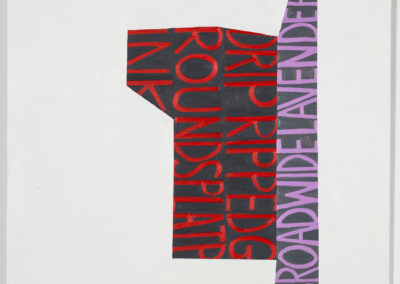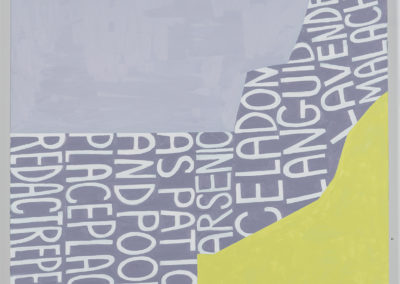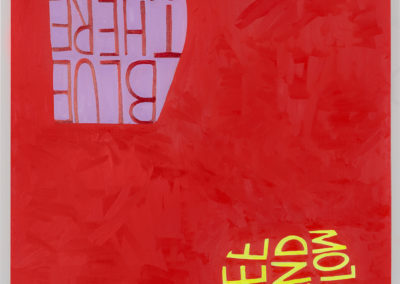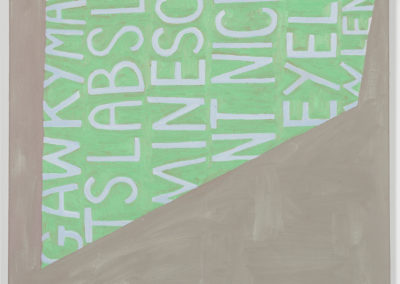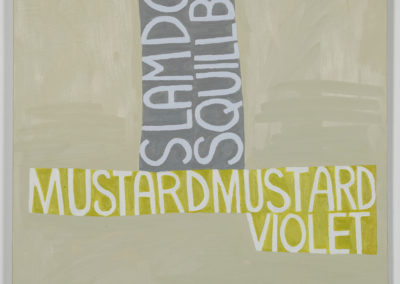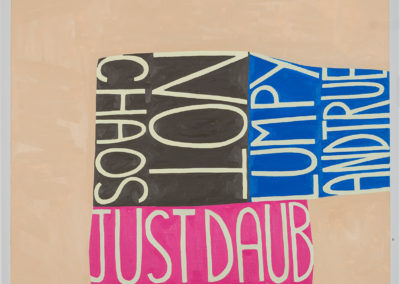GroundSplatPink 2014
Paintings with text, first exhibited at Katzman Contemporary in February of 2014.
Artist Statement:
Paint can be put on a canvas in many ways: tenderly, brutally, sensually, or just plain ugly.1
And finally, squeezed in at the top of the canvas there is a thin strip of a rather nondescript, umberish brown which seems to be holding all the rest in place.2
My new body of paintings, collectively titled Groundsplatpink, (2013/14) stems from my long time fascination with how paintings, particularly abstract paintings, are written about and described. Such descriptions are ubiquitous in art history texts and catalogue essays dealing with modern and contemporary painting. Books about painting tend to concentrate on surface treatments. (Interesting writing about painting can also be found occasionally in “how to” books on painting.
These new works engage abstract geometrical shapes to conjure minimalism, modernism, the urban, demarcations and limitations. The words used in these new paintings both struggle against and actively form their constrictions. The resulting word-shapes are intended to both interrupt and co-produce the paintings’ forms and surfaces.
The most influential text for me in these new paintings is the writing of Roald Nasgaard in Abstract Painting in Canada (please see the inventory exceprt on p. ), a book that sets up a historical trajectory with regional sensitivity. Nasgaard’s writing focuses on imparting the physicality and sensuality of the works he writes about. He loves paintings. This makes for pleasurable as well as informative reading.
In my new paintings I have re-written or invented extremely condensed versions of such sensual descriptions. Although Roald Nasgaard’s writing is important, I also take from a wide range of sources. And except for one painting (Sweepandflow where this phrase is a direct quote from Nasgaard) I don’t quote directly from sources. In each painting I tightly frame words into abstract shapes that form an intentionally awkward composition. Such awkwardness is intended as an homage to modernism’s duty to disrupt and thwart the easiness of balance and resolution. These paintings’ awkward use of vocabulary, of commentary, of composition and paint application is intended to resonate connotatively in the expanded field of art.
1 Joh C. Pellew. Acrylic Landscape Painting. Watson Guptill, 1969. P. 73
2 Jon Thompson. How to Read a Modern Painting: Lessons from the Masters. Abrams, N.Y. 2006. P.257.
